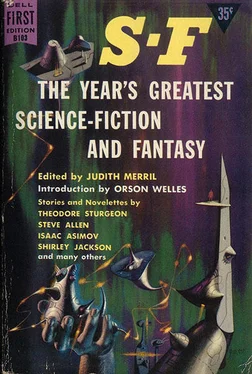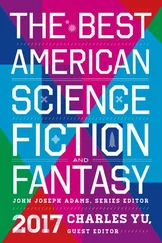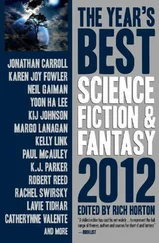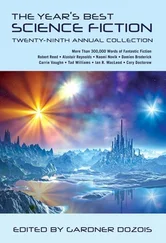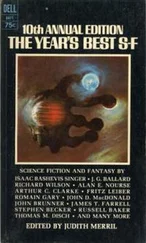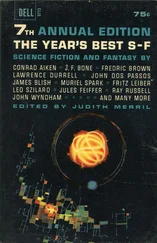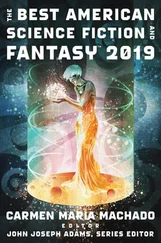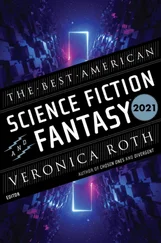Judith Merril - The Year's Greatest Science Fiction & Fantasy
Здесь есть возможность читать онлайн «Judith Merril - The Year's Greatest Science Fiction & Fantasy» весь текст электронной книги совершенно бесплатно (целиком полную версию без сокращений). В некоторых случаях можно слушать аудио, скачать через торрент в формате fb2 и присутствует краткое содержание. Год выпуска: 1956, Издательство: Dell, Жанр: Фантастика и фэнтези, на английском языке. Описание произведения, (предисловие) а так же отзывы посетителей доступны на портале библиотеки ЛибКат.
- Название:The Year's Greatest Science Fiction & Fantasy
- Автор:
- Издательство:Dell
- Жанр:
- Год:1956
- ISBN:нет данных
- Рейтинг книги:5 / 5. Голосов: 1
-
Избранное:Добавить в избранное
- Отзывы:
-
Ваша оценка:
- 100
- 1
- 2
- 3
- 4
- 5
The Year's Greatest Science Fiction & Fantasy: краткое содержание, описание и аннотация
Предлагаем к чтению аннотацию, описание, краткое содержание или предисловие (зависит от того, что написал сам автор книги «The Year's Greatest Science Fiction & Fantasy»). Если вы не нашли необходимую информацию о книге — напишите в комментариях, мы постараемся отыскать её.
The Year's Greatest Science Fiction & Fantasy — читать онлайн бесплатно полную книгу (весь текст) целиком
Ниже представлен текст книги, разбитый по страницам. Система сохранения места последней прочитанной страницы, позволяет с удобством читать онлайн бесплатно книгу «The Year's Greatest Science Fiction & Fantasy», без необходимости каждый раз заново искать на чём Вы остановились. Поставьте закладку, и сможете в любой момент перейти на страницу, на которой закончили чтение.
Интервал:
Закладка:
Conway turned his head slowly and looked at Broome.
“Know what I’m going to do?” he asked.
Broome shook his head, the bright eyes watchful.
“I’m going to bed,” Conway said. “I’m going to sleep. I know my limitations now. The other side’s only flesh and blood too. They have the same problems we have. They have to sleep too. You can wake me up when the next attack starts. Then I’ll handle it—or I won’t. But I’ll do my best and that’s all anybody can do.”
He moved stiffly past Ego toward the door, pausing for a moment to touch his palm against the motionless steel chest. It felt cold and not very steady against his hand.
“What do I mean, only flesh and blood?” he asked.
THE YEAR’S S-F
A Summation by the Editor
This was the year the house collapsed. The house of cards, I mean, otherwise known as the Science Fiction Boom. It’s been rough all over, and I don’t mean only since the pieces began to blow off the top, a couple-three years back; I mean almost from the beginning, since five years ago, when the structure first began to climb precariously higher than its foundations could support.
There were plenty of reasons for the collapse, but none that couldn’t have been predicted—none that weren’t inherent in the build-up. Part of what happened was that science-fantasy got caught in the post-war publishing mushroom (two kinds of mushroom: the kind that grows up overnight, and the kind that makes a big noise—”Boom!”— and blows away in the air). As it happened, just when paper-supplies were loosening up, and people were finding time to read again, the public was discovering some irritating complexities and confusions in the Wonderful Postwar World. Seeking both explanation and escape, readers bought a record number of “How To” books, and scientific popularizations; and at the same time sought the solace of an old companion of hard times and inner turmoil—fantasy. And the experiences of the war itself, five years full of Marvellous Inventions and Heroes of Science, had prepared the reading public to accept—or at least be introduced to—the bastard infant of the union of these forms: science-fiction. (Now that the wedding has been officially sanctioned, there is another, legitimate, offspring of popular science and literary mysticism, the “How To Have Happier Dreams,” school, regularly appearing on all bestseller lists.)
The Boom!, both in s-f and in publishing generally, was most noticeable in paperback books and in magazines. New companies blossomed like dandelions; new titles covered the news-stands and smothered the drugstores, until the quantity of sheer trash and the bewildering variety of choice, inevitably, made a weeding-out period necessary.
The s-f Boom! started later, and lasted longer, than was generally true for the industry. It was 1953 when the bottom fell out of publishing, but for some time after that, s-f continued (comparatively speaking) to flourish—not as it had in the peak year, but still holding better than its own.
There was a reason. In all the excitement, science-fantasy actually had grown from an esoteric specialty field to a small, but solid, “category,” of interest to a significant portion of the general reading public. It didn’t, as some of its prophets had loudly proclaimed, put mysteries and westerns out of the running; it did establish a small shelf for itself, beside them.
In the summer of 1955, the Saturday Review of Literature, which had been (as I recall it) the first of the serious critical journals to accord recognition to science-fantasy, apparently decided it had a corpse on its hands. Somewhat embarrassed, they engaged a pair of literary undertakers to dispose of the matter for them. These two gentlemen, Siegfried Mandel, an English instructor at Brooklyn Polytechnic, and Peter Fingesten, a sculptor and authority on “world symbolism,” produced an article entitled, “The Myth of Science Fiction.” In it, (as is frequent in funeral addresses), they chose to ignore the erratic behavior of the last few years of the subject’s life, and confined their comments largely to the period of infancy. (This extreme is less customary.)
In any event, the co-authors of this higher criticism managed to produce an admirable analysis of what-was-wrong with s-f twenty years ago, and explained adequately why it could never have become a popular fiction-form at that time, addressed as it was to a limited group of intellectual frustrates with technocratic political leanings, and no social leanings whatsoever.
They buried the wrong corpse; but perhaps we should thank them for doing it. Science-fantasy has long outgrown both its worship of machines and its fear of emotion. Where emphasis once was on the mechanical sciences, it has shifted now to the psychological; where Scientific Progress was once the unquestioned goal, the more usual objective now is to question just what sort of progress might offer the most satisfaction for human needs.
S-f, today, has found a valid and permanent place for itself on the contemporary literary scene. Just what that place may be has been the subject of considerable debate. For me, the location was pointed out most clearly in the introductory comments made by the editors of an eminently readable recent collection (no relation to science-fiction), “New Campus Writing,” (Bantam, 1955).
Messrs. Nolan Miller and Judson Jerome noted that the submissions they received for consideration were both plentiful and varied—with one exception: “There would seem to be little probing by campus writers into the relation of man to machine, man to society, man to the universe of the atom.” And a little later: “We are puzzled that the issues of our times—science, technology, politics, starvation of the mind and body—figure only slightly, if at all . . . we find people in twos and threes; we examine individuals in the process of discovering themselves—finding the terms by which they can live in the world without changing it.”
I believe this is true of a very large part of the best modern literature. And it is this gap that science-fantasy fills. This is precisely what the authors in this book have done. And that there is a place for it, readers looking for it, is clearly evidenced by the position of the field today—after the Boom!
Seven years ago, just before it all started, there were only two regular monthly magazines in this country, publishing original (not reprint) science-fiction: Astounding, which was then, as earlier, (and still) a first-rate magazine; and Amazing Stories, which was then a “pulp” devoted almost exclusively to exploring Lemuria under the guidance of one Richard Shaver. There were five other magazines then publishing original s-f, all bi-monthlies or quarterlies.
Today, there are thirteen s-f magazines appearing in this country: five regular monthlies, four each of quarterlies and bi-monthlies. Eight of these, at least, are good magazines, that may confidently be expected to remain in good health.
Amazing Stories , as of the beginning of 1956, has become a monthly again; this one is for fast action, plot, and pace —though not profundity.
Astounding, which has never faltered in schedule or quality, continues to be directed primarily to the engineer-reader and devotee of the true problem-story.
Fantastic Universe; also monthly. If the science-fiction in here is sometimes weak, the fantasy can almost always be relied upon to be first-rate.
Fantasy & Science Fiction; monthly. The unquestioned leader in the field for literary quality, for innovations in form, and for intelligent humor.
Читать дальшеИнтервал:
Закладка:
Похожие книги на «The Year's Greatest Science Fiction & Fantasy»
Представляем Вашему вниманию похожие книги на «The Year's Greatest Science Fiction & Fantasy» списком для выбора. Мы отобрали схожую по названию и смыслу литературу в надежде предоставить читателям больше вариантов отыскать новые, интересные, ещё непрочитанные произведения.
Обсуждение, отзывы о книге «The Year's Greatest Science Fiction & Fantasy» и просто собственные мнения читателей. Оставьте ваши комментарии, напишите, что Вы думаете о произведении, его смысле или главных героях. Укажите что конкретно понравилось, а что нет, и почему Вы так считаете.
